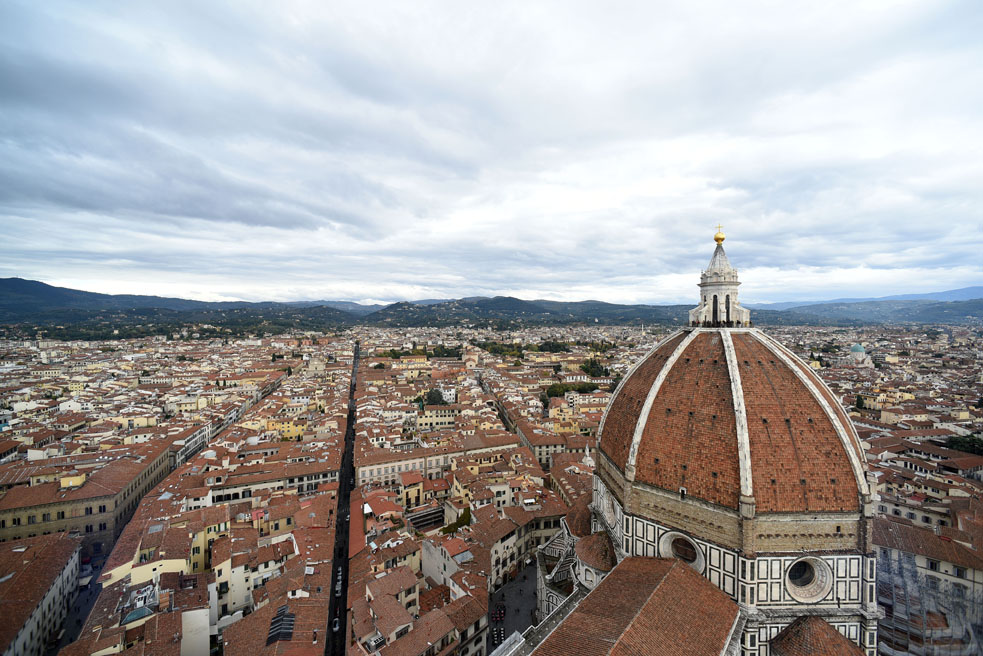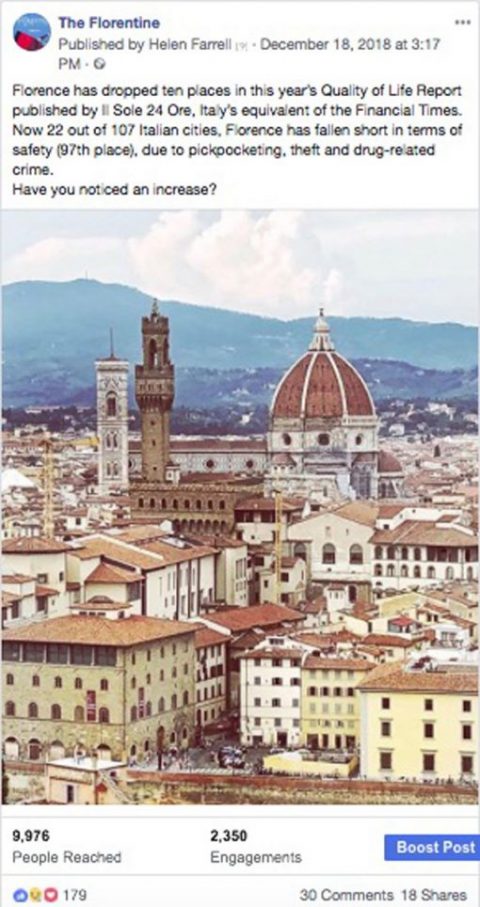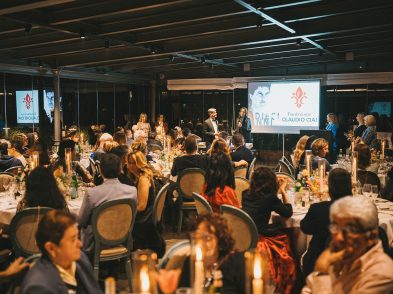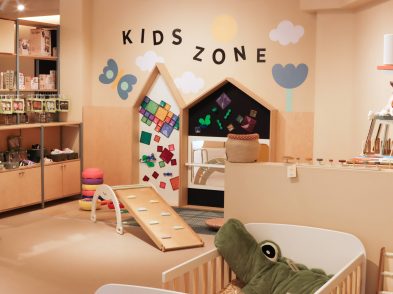Debate always surrounds the Quality of Life Report published at the turn of the year by Il Sole 24 Ore. It’s a statistics-based dossier that has been compiled by Italy’s equivalent of the Financial Times since 1990 to provide an overview of nationwide living standards. Top for 2018 was Milan, which excelled in the wealth + spending and environment + amenities categories, in addition to placing highly for culture + spare time and business + work. Surprisingly, Florence dropped ten spots to 22nd in this year’s summary, topping the chart for life expectancy and performing strongly on the culture, amenities and innovation fronts, but falling short in terms of safety (97th place out of 107 Italian cities).
Crime figures in the report derive from the publication’s dedicated “Indice della criminalità” (Crime Indicators), for which data is taken from the Department of Public Safety. According to this listing, Florence is the fourth Italian city with the most reported crime, with 6,367.4 crimes per 100,000 residents compared to 7,237.70 in Milan, which is the city with the most crime in Italy. Neither Florence nor Milan tends to suffer from violent misdemeanours (16 murders in Florence down by 27%, 85 in Milan down by 1%). Theft is higher than the national average in both cities, albeit seeing no increase on the previous year: in Florence, 3,275.57 thefts occur per every 100,000 residents; in Milan, 4,348.59. In the Tuscan capital, bag grabbing is down by 2% with 391 instances (Venice saw a 51% rise, Rome 3% and Milan 5%), pickpocketing was 1% up (6,963), house burglaries have decreased by 3%, while commercial burglaries are up by 7%. The culprits behind Florence’s lower placing in the report appear to be money laundering (+55%), sexual violence (+22%) and drug-related crimes (+11%). Indeed, this is the first year that the report has taken into account the number of drug-related crimes per 100,000 residents, which are on the increase across the peninsula. But Florence is only fractionally above the national average, which was +10% in 2018.
Statistics always stir conversations because of the stark numerical impact. What’s interesting is the perception of safety in Florence. How safe do we feel? Have often do we experience crime? And how regularly do we report it?

A readers’ survey conducted via The Florentine’s Instagram stories revealed that 81% of our followers had never experienced a crime in Florence (94% of followers were located in Florence when the poll was taken). In response to the question “How safe do you feel in Florence?” the overwhelming majority stated that they feel “very”, “100%” and “extremely” safe, while six cited unease due to break-ins at home and in their cars, harassment on the street and walking home at night.
A cross-section among colleagues revealed few encounters with unlawful behaviour: in a Moroccan fast food place, Giovanni had his wallet taken out of his back pocket, the cash removed but the wallet returned; Vincenzo had his wallet pinched on the number 17 bus and tells of the drug squads parked late at night by the Fortezza gardens and in piazza Indipendenza; Valeria, who lives in the Cascine/Porta al Prato neighbourhood, reports the odd sporadic fight between Peruvian transsexual prostitutes in via del Ponte alle Mosse; Alexandra says she feels safe out in Coverciano, but remembers straying male hands back in her “blonde student days”; Samantha recalls how during her first year in Florence someone on a moped grabbed for her at 4am; Mindy, a recent intern at The Florentine, commented at how she wouldn’t contemplate walking home alone at night and how, in the summer, she would even think twice about strolling the streets on her own due to unwanted male attention. Gallery owner Emma thinks that the issue isn’t serious crime happening in Florence, but comments that house robberies and pickpocketing are usual, while Irish artist Tom reported that his one instance was seeing a motorcyclist in his sixties rob a woman of her handbag. Bianca, owner of a wine bar near the San Lorenzo market related a recent incident: “We need more security on the streets of Florence. At 9pm, three North African drug dealers were sniffing cocaine and drinking next to my store, then a couple of delinquents, who’d ordered a tumbler of rum and asked for food without wanting to pay for it, ran off without paying the bill. They even took the table with them!”
Personally speaking, over 16 years, my sole instances of experiencing crime in Florence consisted in my debit card being cloned in 2002 and my borgo della Stella apartment being burgled during Ferragosto week in 2006—my American flatmate and I were both back in our respective countries; they had clearly been staking the joint. Five years ago, a homeless guy flashed me in the Cascine in broad daylight.
Feeling safe, like any emotion, is a matter of psychology. When the army assumed a permanent posting in piazza Duomo back in 2005, the overriding feeling was unease at the need for a military presence in the city’s holiest square. When metal detectors were installed at the Accademia shortly afterwards, sadness was the sobriquet. When anti-ramming measures were introduced in summer 2017, inevitability was the word that came to mind. Safety is relative and our perception of it shifts with seismic changes in the global landscape and less dramatic differences in our local surroundings.
In a May 2018 interview with The Florentine, Matteo Casanovi, president of Silfi, the company that controls the city’s lighting network, pointed out that “there are times when we turn on the lights as a mark of reassurance, like when the tornado struck lungarno Colombo and surroundings in August 2015”. Meanwhile, the City of Florence is commencing the new year by installing latest-generation LED lighting along lungarno Santa Rosa and CCTV cameras in viale Fratelli Rosselli, part of a 750-strong rollout of security cameras in the first six months of 2019 and a continuance of the campaign launched in 2017. “Greater prevention and more control,” was how Mayor of Florence Dario Nardella described it in a recent tweet.
Florence is a cocoon, a sanctuary; the art and architecture bewitches us into a bubble of safety. Many of us move here as temporary residents, to study or to work, but the beauty and the sense of security paints a picture that we never want to relinquish. Like any city, however, Florence has a dark side, one we often choose to disbelieve in favour of the fairytale. To make sure the bubble doesn’t burst, be vigilant—like you would be anywhere in the world.
What you said
(culled from comments on The Florentine’s Facebook page)

Gabrielle Bondi: Life in the city centre has changed immensely in regards to personal safety…Unfortunately, it’s no longer as safe as it used to be.
Johanna Bishop: My (worthless) phone was stolen sometime this year by a very unskilled pickpocket who looked like he had a bad heroin problem. Did I feel unsafe, even when I was arguing with the guy? No. Do I feel unsafe now when I’m walking around Florence? No. Do I think things have gotten worse? Hell no, I’ve known for twenty years that you don’t put valuables in easily accessed pockets, especially around the station, and this was probably, literally, the first time I let my guard down in that sense. I’m sure it will happen again, in another twenty years.
Giulia Scotto: Yes, it is true, and not because of the tourists. Florence is unsafe… be careful, guys, staying in a dark street with a brand new cellphone is risky…you are advised!!!
Christina Santorini: How surprised to learn it. I always felt safe in Florence. People I met were so kind. Just cannot associate crime to the beautiful and generous city of Florence.
Jenner Southerland: Unfortunately, more tourism equals more pickpocketing theft, especially when the tourists don’t take the necessary precautions.
Patricia Geremia: Not me – and I have the habit of walking the bridges late at night when I’m there. Sad to see this report & some of the distorted comments in this post.
Donna Malin: I have never felt unsafe in Florence.








